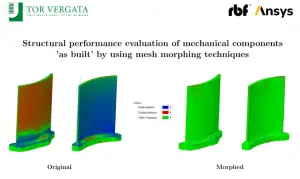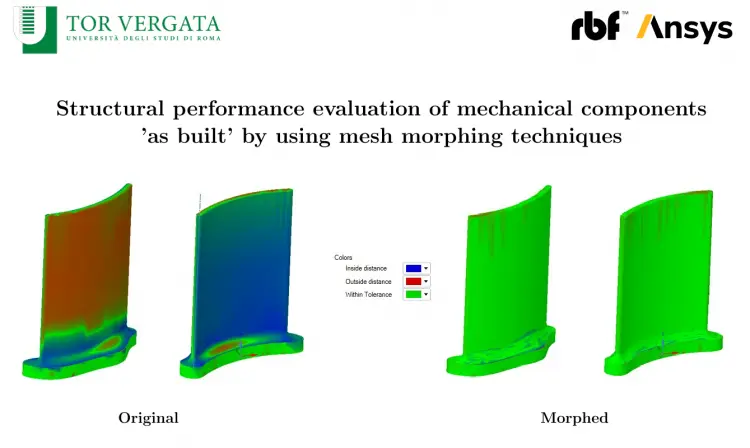
We are happy to share another interesting thesis that leverages our software discussed by an Engineering student at University of Rome Tor Vergata. In Francesco Scarpitta’s thesis, “Evaluation of ‘As Built’ Performance of Mechanical Components Using Mesh Morphing Techniques,” the focus was directed towards devising innovative methodologies to ascertain the influence of shape error on the structural performance of mechanical components in real-world applications. The research commenced by utilizing perfect and ideal CAD geometries from the initial design phase. The CAE model of the system was then adjusted to conform to the actual manufactured shape obtained through 3D scanning technology.
The systematic process unfolds through several key steps. Firstly, the baseline geometry derived from the CAD model serves as the foundation to define the reference FEA model for the solver, allowing computation of crucial performance indicators such as stress levels and stiffness. The integration of Radial Basis Function morphing provided by RBF Morph plays a pivotal role in morphing the baseline FEA model onto the physically manufactured shape. Subsequently, the updated FEA model undergoes analysis once again to extract performance indexes, determining whether the component aligns with the original design specifications.
The success of this methodology was demonstrated through rigorous testing on specific examples, including a shaft, a hook, and a simplified turbine blade. The incorporation of these techniques tailors the numerical prediction to the unique characteristics of each manufactured component. This approach has proven to be particularly advantageous in applications involving the creation of digital twins, facilitating the monitoring and prediction of real product performance throughout their entire lifecycle. The thesis establishes a framework that not only enhances the accuracy of structural analysis but also contributes to the evolution of predictive modeling in engineering practices.
You can read the thesis and the presentation.



